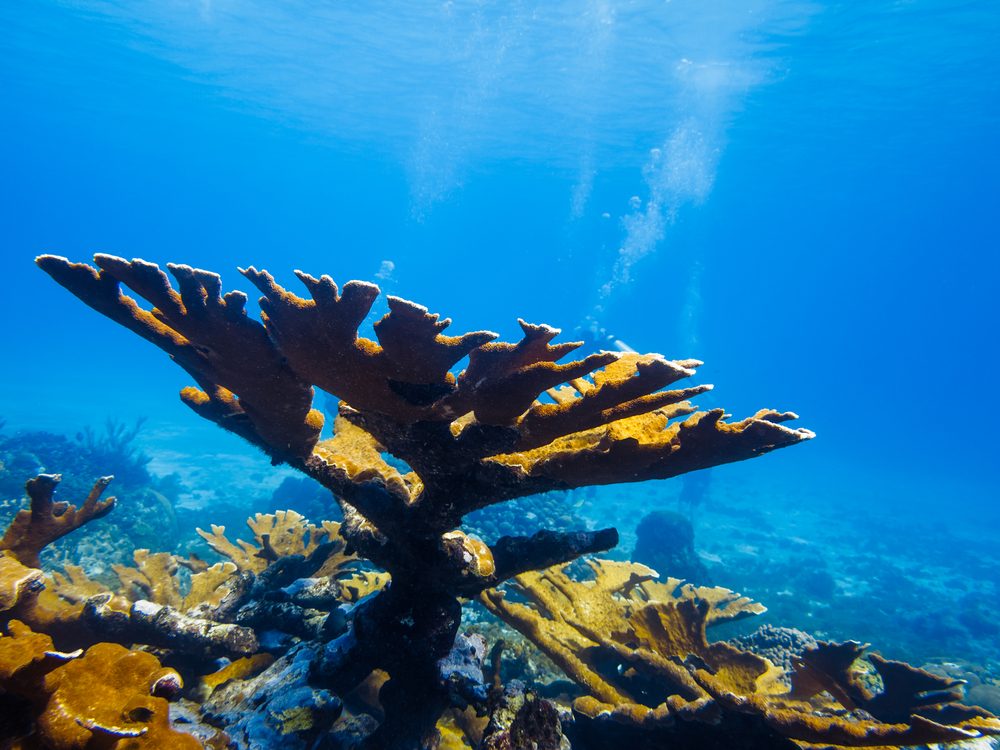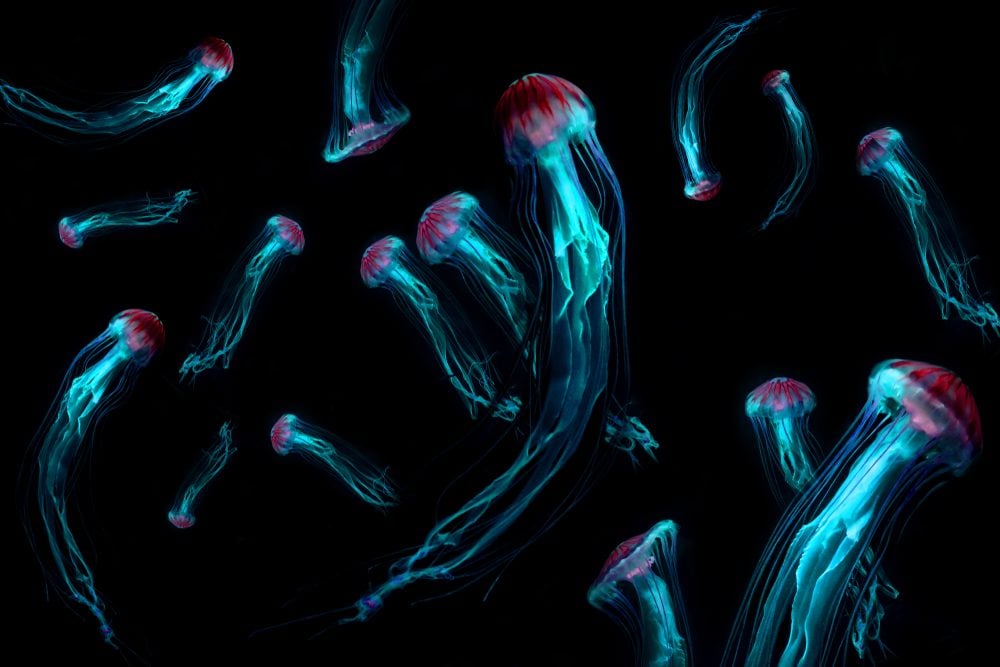- লিঙ্ক পান
- X
- ইমেল
- অন্যান্য অ্যাপ
10 of the Oldest Living Animals in the Entire World
BY PJ FEINSTEIN
For many species, turning 100 years old is nothing special.
Elkhorn corals
 PETE NIESEN/SHUTTERSTOCK
PETE NIESEN/SHUTTERSTOCK
Did you know that corals aren't plants? They are actually colonies of tiny living invertebrates called polyps, and unlike plants, these corals capture their food rather than making it. They also might be the longest-living animals in the world. Researchers estimate that the elkhorn corals in Florida and the Caribbean may actually have originated more than 5,000 years ago, proving that they're resilient little sea creatures. Check out these "facts" about animals you have all wrong.
Bowhead whale
 SAHELAN/SHUTTERSTOCK
SAHELAN/SHUTTERSTOCK
When it comes to whales, the Arctic-dwelling bowhead might not be the most familiar, but it does hold two distinct honors. First, the bowhead whale has the largest mouth of any animal; a mature male's mouth may be one-third the size of its body. Second, bowheads can live to be more than 200 years old, making them the marine mammal with the longest lifespan. Here's everything you never knew about penguins.
Aldabra tortoise
 DANM12/SHUTTERSTOCK
DANM12/SHUTTERSTOCK
The world's oldest known living animal is an Aldabra tortoise named Jonathan, who arrived on the West African island of St. Helena way back in 1882. Now 186 years old, Jonathan has lost his vision and his sense of smell, but he isn't living a lonely life. Since 1991 he's been eating, sleeping, and mating with another giant tortoise. Their relationship made headlines last year when it was discovered during a veterinary visit that Jonathan's girlfriend, Frederica, was actually a Frederic!
Ocean quahog
 GRETCHEN GUNDA ENGER/SHUTTERSTOCK
GRETCHEN GUNDA ENGER/SHUTTERSTOCK
Ming the ocean quahog might still be one of the world's oldest animals if scientists hadn't accidentally killed it at age 507. Born in 1499 and named for the ruling Chinese dynasty at that time, the Icelandic clam was minding its own business when researchers cracked opened Ming's shell to count its growth rings—and killed it. Oops!
Greenland shark
 EPOCHCATCHER/SHUTTERSTOCK
EPOCHCATCHER/SHUTTERSTOCK
The secret to the Greenland sharks' longevity may be their super slow growth rate. Growing only 1 centimeter per year, Greenland sharks can live as long as 400 years, making them one of the longest-lived vertebrate on Earth. On average, though, they live to closer to 272 years. And because they age so slowly, Greenland sharks don't start mating until they're at least 150 years old!
Tubeworms
 KIM PIN/SHUTTERSTOCK
KIM PIN/SHUTTERSTOCK
When it comes to longevity, the general rule of thumb is that larger animals live longer. So it makes little sense why tiny tubeworm species found deep in the Gulf of Mexico can live up to 250 years. Tubeworms living at the bottom of the ocean get all of their nutritional needs from bacteria, making their diet pretty bizarre too. For more weirdness, check out the most indestructible species on the planet.
Laysan albatross
 WILLYAM BRADBERRY/SHUTTERSTOCK
WILLYAM BRADBERRY/SHUTTERSTOCK
In 1956, a biologist named Chandler Robbins banded Wisdom, a Laysan albatross, on the Midway Atoll in the North Pacific Ocean. Robbins passed away at the age of 98 in 2017, but 67-year-old Wisdom is still alive. The world's oldest known wild bird is also still laying eggs. So far she's raised between 30 to 35 chicks, outliving several of her mates. Here are five more animals with unusual superpowers.
Tuataras
 VIKTOR HEJNA/SHUTTERSTOCK
VIKTOR HEJNA/SHUTTERSTOCK
The tuatara may be small at two-and-a-half feet, but it has a long history: The lizard-like animal is part of an order related to dinosaurs that roamed the Earth more than 200 million years ago. Now endangered, the remaining tuataras live in New Zealand, including the Southland Museum's world-famous tuatara, Henry, who became a dad for the first time at age 110. Check out these 12 endangered baby animals making a comeback.
Red sea urchins
 NATUREDIVER/SHUTTERSTOCK
NATUREDIVER/SHUTTERSTOCK
The largest of all the sea urchins, red sea urchins were once thought to live for only seven to ten years. However, recent studies have shown that these Pacific Ocean residents can live up to ten times longer depending on their location. Red sea urchins in Southern California live approximately 50 years, while those found in Canada can live to 100—or longer, and some found in British Columbia are closer to 200 years old. Don't miss these fascinating photos of deep-sea creatures.
Jellyfish
 CHONLASUB WORAVICHAN/SHUTTERSTOCK
CHONLASUB WORAVICHAN/SHUTTERSTOCK
When it comes to longevity, it's hard to beat forever, but that's how long the Turritopsis dohrnii can potentially live. This "immortal" jellyfish, only 5 millimeters long, can regenerate in a crisis. Rather than dying, the Turritopsis transforms its adult cells into younger cells and ages backward to polyps again. Death is not completely preventable, though; these jellyfish can be killed by predators or disease, especially in the polyp stage. Check out more immortal animals that can basically live forever.
- লিঙ্ক পান
- X
- ইমেল
- অন্যান্য অ্যাপ
মন্তব্যসমূহ
একটি মন্তব্য পোস্ট করুন